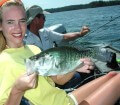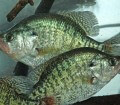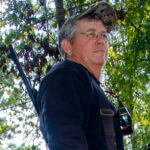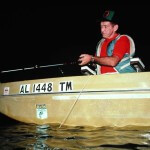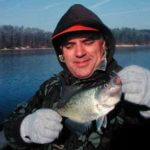John’s Note: Spain likes to fish around the town of Demopolis in west central Alabama, because this area is where two rivers – the Warrior and the Tombigbee – meet. If one river is muddy, cold or not producing the number and the size crappie that Spain wants to catch, he can fish the other river. On the day that we fished together in early March, 2016, I was really surprised that we started catching crappie within 50 yards of the boat ramp. Here’s more of David Spain’s crappie-fishing story.
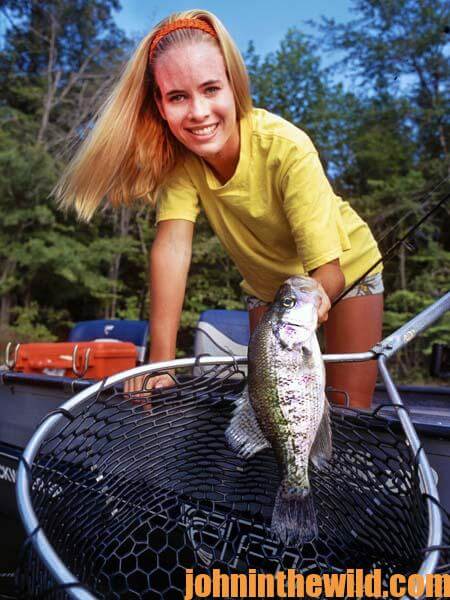 For some reason, as soon as crappie fishermen and bass fishermen put their boats in the water, they crank their big engines and want to make long runs to where they think they’ll find more fish. But, I’ve learned that the area closest to most boat ramps receives the least amount of fishing pressure and often homes some of the biggest crappie found on the river.
For some reason, as soon as crappie fishermen and bass fishermen put their boats in the water, they crank their big engines and want to make long runs to where they think they’ll find more fish. But, I’ve learned that the area closest to most boat ramps receives the least amount of fishing pressure and often homes some of the biggest crappie found on the river.
I’ve also learned that most of the time from February to mid-April, I can catch crappie by fishing with a 1/16-ounce jighead inserted into a small tube jig with a black head and a green tail. I use a small slip cork up the line about 2-feet above my jig. I like a spinning rod with 6-pound test line, and I cast my jig close to the cattails or any visible grass. I like the 6-pound test line because it’s strong enough to handle a big crappie, a bass or a catfish. Using the technique that we do, you’ll catch other species than crappie. Once my jig lands on the water, I let it sit still until I can no longer see the wave rings created when the jig and the cork have hit the water. If the water temperature is in the upper 40s or low 50s, I may let that jig sit still a little longer. This technique is known as dead-sticking the jig. If the crappie aren’t biting aggressively, they will take the jig without it being moved.
 Another reason that I don’t move the jig very much with my rod tip is because there’s usually a slight breeze or light wind in the spots I fish. The wind does two things to my jig. A slight ripple on the water will make the cork ride up and down over the little waves, which causes the jig to move up and down. Also, the wind will move my jig very slowly in the area where I want to fish. We tend to catch more crappie when there’s a wind on the water than when the air is flat and calm. Also, I use my rod tip to move the jig away from the visible grass and toward the boat. I shake the line with my rod tip, take up about a turn on the reel and then shake it again. By casting and retrieving, I can cover much more water and find and catch more crappie than if I’m drop fishing with a pole. Many times small places will hold good numbers of crappie. So by casting and retrieving, my friends and I can identify those places and often catch four or five crappie out of the same spot. Besides the visible grass, there’s plenty of grass underwater in these backwater regions. As the water warms up in February, that underwater grass starts to grow, and we catch crappie all the way from the shoreline almost all the way back to the boat.
Another reason that I don’t move the jig very much with my rod tip is because there’s usually a slight breeze or light wind in the spots I fish. The wind does two things to my jig. A slight ripple on the water will make the cork ride up and down over the little waves, which causes the jig to move up and down. Also, the wind will move my jig very slowly in the area where I want to fish. We tend to catch more crappie when there’s a wind on the water than when the air is flat and calm. Also, I use my rod tip to move the jig away from the visible grass and toward the boat. I shake the line with my rod tip, take up about a turn on the reel and then shake it again. By casting and retrieving, I can cover much more water and find and catch more crappie than if I’m drop fishing with a pole. Many times small places will hold good numbers of crappie. So by casting and retrieving, my friends and I can identify those places and often catch four or five crappie out of the same spot. Besides the visible grass, there’s plenty of grass underwater in these backwater regions. As the water warms up in February, that underwater grass starts to grow, and we catch crappie all the way from the shoreline almost all the way back to the boat.
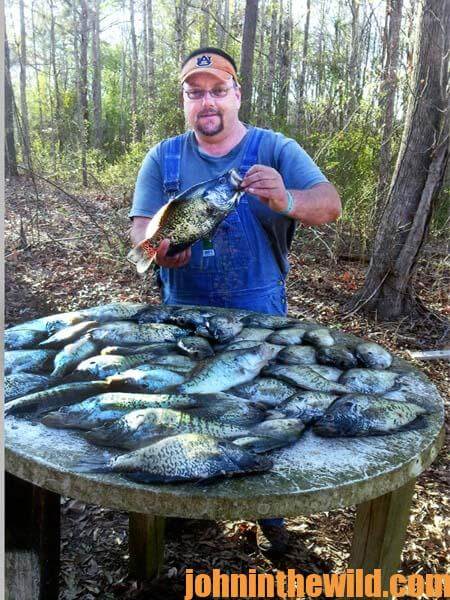 Many crappie fishermen prefer to use 2-4-pound-test line. I’ve tried the smaller diameter line. When we get hung-up in the grass, the smaller line will break. But with the 6-pound-test line, I usually can pull my jig free from the grass. Also, I feel more comfortable reeling in a big crappie on 6-pound-test line than I do with the smaller diameter line. We also use a dip net with big crappie. Now, I know that many pole fishermen prefer to swing their crappie into the boat and not use a net. However, we’ll catch a good number of crappie that will weigh from 1-3/4-pounds up to 2-1/2-pounds. By using a dip net, I’ve found that I lose fewer big crappie than I do when I attempt to swing them into the boat.
Many crappie fishermen prefer to use 2-4-pound-test line. I’ve tried the smaller diameter line. When we get hung-up in the grass, the smaller line will break. But with the 6-pound-test line, I usually can pull my jig free from the grass. Also, I feel more comfortable reeling in a big crappie on 6-pound-test line than I do with the smaller diameter line. We also use a dip net with big crappie. Now, I know that many pole fishermen prefer to swing their crappie into the boat and not use a net. However, we’ll catch a good number of crappie that will weigh from 1-3/4-pounds up to 2-1/2-pounds. By using a dip net, I’ve found that I lose fewer big crappie than I do when I attempt to swing them into the boat.
To learn much more about crappie fishing, get John E. Phillips’ Kindle eBooks and some print books, “Crappie: How to Catch Them Fall & Winter,” “Crappie: How to Catch Them Spring and Summer,” “Catch Cold Water Crappie Now” and “Catch Crappie All Year: Fishing a Single Pole, Using No Boat and Farming Crappie.” Click here.
To receive and download for free “The Crappie Catchers’ Cookbook,” by John and Denise Phillips that offers free recipes, go to https://johninthewild.com/free-books.

